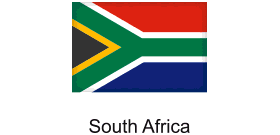 South Africa Debuts Electronic Travel Authorisation, Ushering in a New Era of Seamless Arrivals
South Africa Debuts Electronic Travel Authorisation, Ushering in a New Era of Seamless Arrivals
South Africa has set a bold new course in international visitor facilitation with the launch of its Electronic Travel Authorisation (ETA), a major leap towards fully digitized, traveller-centric border controls. Announced on 18 September 2025 by Minister of Home Affairs Dr. Leon Schreiber at the Tourism Business Council of South Africa’s Leadership Conference in Sun City, this initiative is poised to transform the way travelers from across the globe experience arrival and departure in the country.
Long notorious for its laborious paper-based visa processes, South Africa is now ready to enter the fast lane of global travel efficiency. The newly introduced ETA system promises to replace outdated manual paperwork with a secure, streamlined, and fully online application process. International visitors will soon be able to submit their travel details, capture biometrics, and receive near-instant travel approval—all from the convenience of their digital devices. This change is expected to cut processing times dramatically, removing one of the most persistent friction points for both leisure and business travelers aiming to explore South Africa’s diverse attractions.
The ETA is powered by the cutting-edge Electronic Movement Control System (EMCS 2.0), which harnesses facial recognition and automated biometric verification at major ports of entry. The rollout begins at OR Tambo International Airport in Johannesburg (JNB) and Cape Town International Airport (CPT), two of Africa’s busiest and most important international gateways. By automating and digitizing the entry process, the system not only promises faster, more convenient arrivals but also elevates the security framework—ensuring that each visitor’s identity is verified with world-class accuracy, reducing the risk of fraud or unauthorized entry.
The ETA introduction follows a carefully structured, phased implementation plan:
- Phase 1 (September–October 2025) is an exclusive launch for G20 delegates from China, India, Indonesia, and Mexico. Applications are set to open in mid-October, allowing these delegates to experience the system ahead of the G20 Leaders’ Summit in Johannesburg from 14–16 November 2025. This initial phase enables authorities to test and refine the platform with a focused user group while supporting South Africa’s role as summit host.
- Phase 2 (Post-Summit) will see ETA access extended to the general public from the same four countries, provided the system proves stable during Phase 1. The digital payment integration will go live, making it possible for tourists to apply and settle visa fees entirely online before they travel.
- Phase 3 (2026 onwards) involves a progressive global rollout, with the ETA becoming available to all visa-requiring markets. The system will also be expanded to additional airports, overland borders, and smaller ports of entry as infrastructure is scaled up, further broadening its reach and impact.
As the ETA system matures, South Africa aims to expand its application beyond traditional tourist visas. The government envisions a future where fully automated entry and exit procedures cover a wide spectrum of visa categories, including business, study, and transit, at all official points of entry. This all-encompassing digital transformation marks a strategic move to reposition South Africa as a leader in border management innovation within the region and globally.
For Africa’s travel industry professionals, this is a development of considerable significance. The ETA is expected to boost South Africa’s appeal to both established and emerging source markets, lowering barriers for travelers and encouraging longer, more frequent visits. The anticipated reduction in entry hassles is likely to drive up arrivals from high-growth Asian markets, such as China and India, which represent key segments for the continent’s tourism growth over the coming decade.
Moreover, the ETA’s integration with biometric and facial recognition technology signals a trend toward smart, secure travel infrastructure that is bound to become the new standard across Africa. This leap sets a benchmark for neighboring countries considering similar reforms and invites regional collaboration in building a more interconnected, visitor-friendly continent. For operators, DMCs, and hospitality providers, the ETA means rethinking sales, marketing, and guest support in an environment where digital readiness and real-time information are paramount.
South Africa’s commitment to further ETA expansion across airports, land borders, and smaller ports will create new opportunities for tourism dispersal. Destinations beyond the traditional gateways stand to benefit from increased visitor flows as the arrival process becomes more accessible and predictable for international guests. For the African travel sector, this presents a chance to develop new products, cross-border itineraries, and joint marketing initiatives that leverage the ease of entry provided by the ETA.
As the system evolves, continuous feedback from users and industry stakeholders will be crucial in refining the digital journey. The ultimate goal is nothing short of a seamless arrival and departure experience that matches or exceeds global best practices. With the ETA, South Africa is not just catching up—it is setting the pace for the future of travel in Africa, where frictionless mobility, security, and customer-centricity go hand in hand.
For the continent’s travel professionals, the message is clear: digital transformation is no longer a distant aspiration but an immediate priority. Those who adapt swiftly and embrace these new tools will be best positioned to capture the next wave of growth, as South Africa’s ETA ushers in a new era of borderless opportunity for tourism and business alike.
